Home
List of Blogs
Exploring Resistance Welding Controllers need & selection.
Welding controller is vital part of modern resistance welding machines. Old controllers have only a time controlling power relay to supply welding current for a particular time and the weld current is adjusted by rotary switch. Modern resistance welding controllers have many function. Now timers are lines synchronized to prevent excess spark on work piece and saturation of power transformer for an electricity supply cycle. Along with squeeze, weld & hold times the off time is added to repeat welding cycle to weld wire mesh or fast repeated welds. In more advanced controllers some more timers are provided like up-slope, down-slope, weld1, weld2, weld3, hold1, hold2 and hold3 etc. and a programmable relay output is provided to synchronized operation with external automation components. Top models also have secondary feedback circuit to make perfect and same weld results on every welding part even in fluctuating power supply. The feedback circuit also care of rusty items. If passing current has some disturbance due to rust or any other circumstance the machine will alarm to reject the loose welded item.
Following is list of some non-feedback resistance welding controllers available in market.
KD322 Paddle Operated Resistance Welding Panel
Model:- KD322
KD322 spot welding controller is a microcontroller based welding controller and is made for paddle operated Thyristor controlled machine. It has fast weld time and current setting through knobs. It has inbuilt firing circuit, hence need minimum wiring for fast installation.
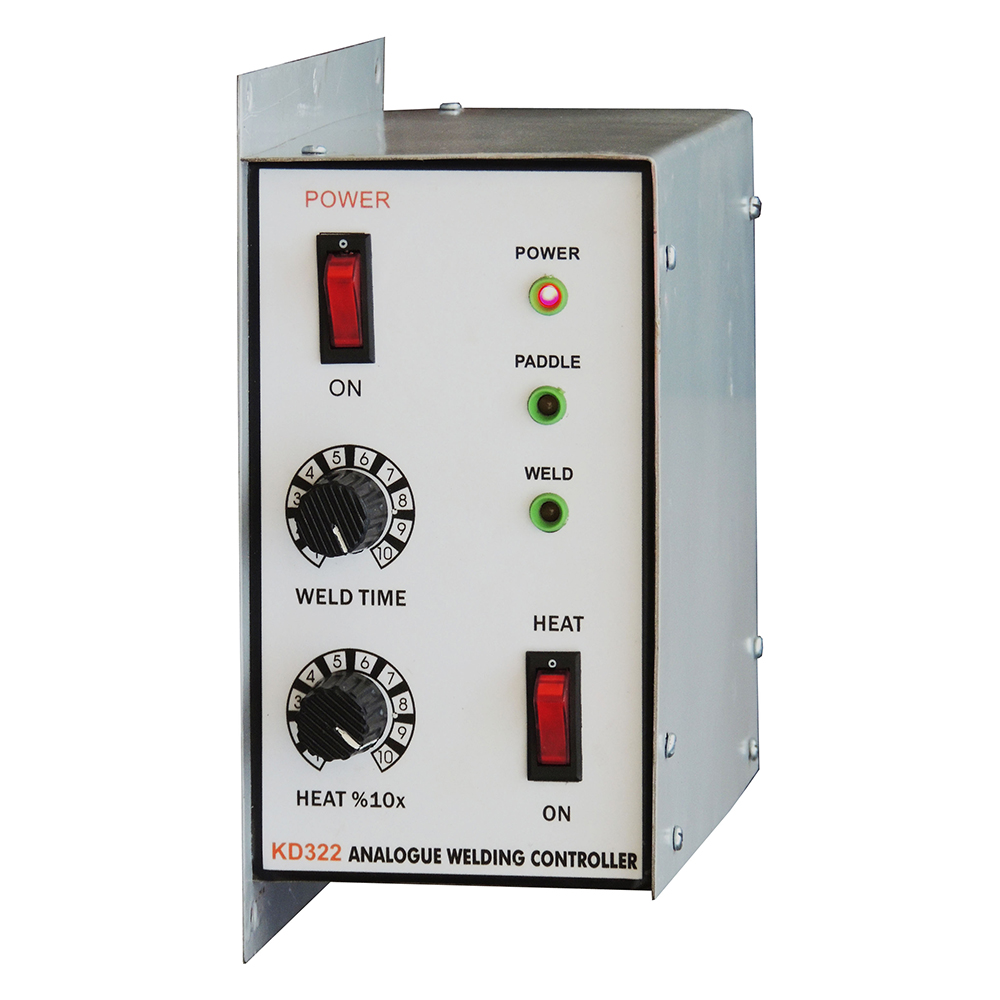
DS330 Paddle Operated Resistance Welding Panel
Model:- DS330
DS330 panel is made for paddle operated spot welding machine. It is suitable for any brand ‘SCR’ controlled, paddle operated spot welder. The inbuilt firing circuit gives hassle free quick installation.
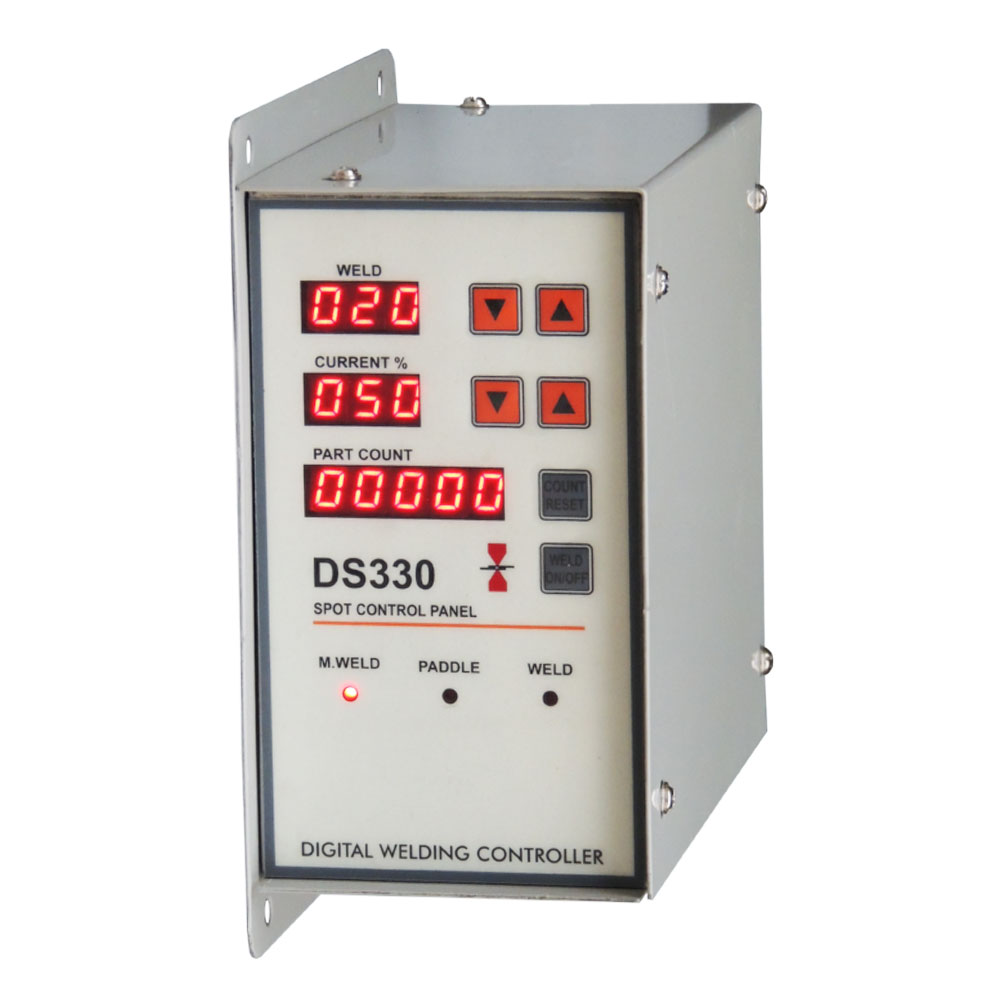
DS324 Easy Operate, Spot / Projection Welding Controller
Model:- DS324
DS324 is simplest and easy operate spot welding and projection welding controller with digital parameter setting. The squeeze, weld, hold timer and weld-current value is directly settable by their ideal tactile switches. All set parameters are retain in memory. The inbuilt firing circuit gives hassle free quick installation.
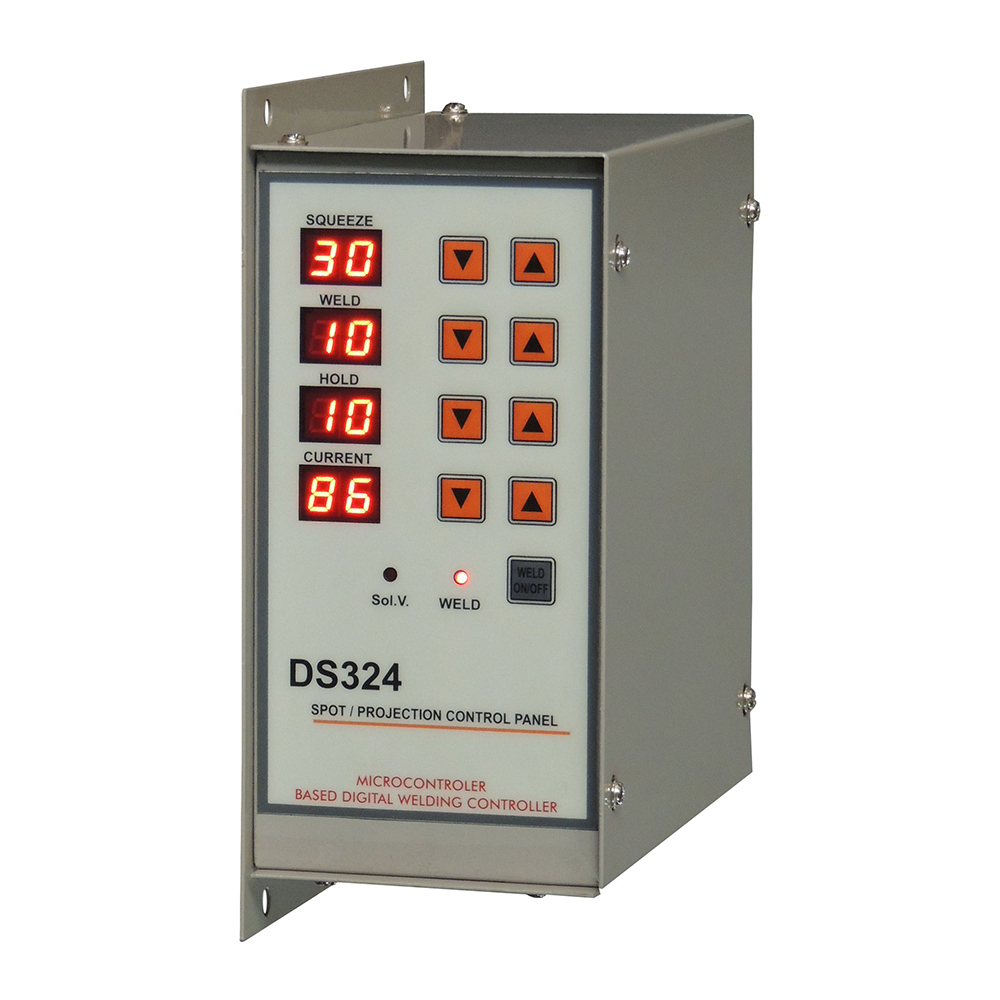
DS309 Resistance Welding Controller
Model:- DS309
DS309 is basic model for general purpose spot and projection welding machines and is a most selling panel.
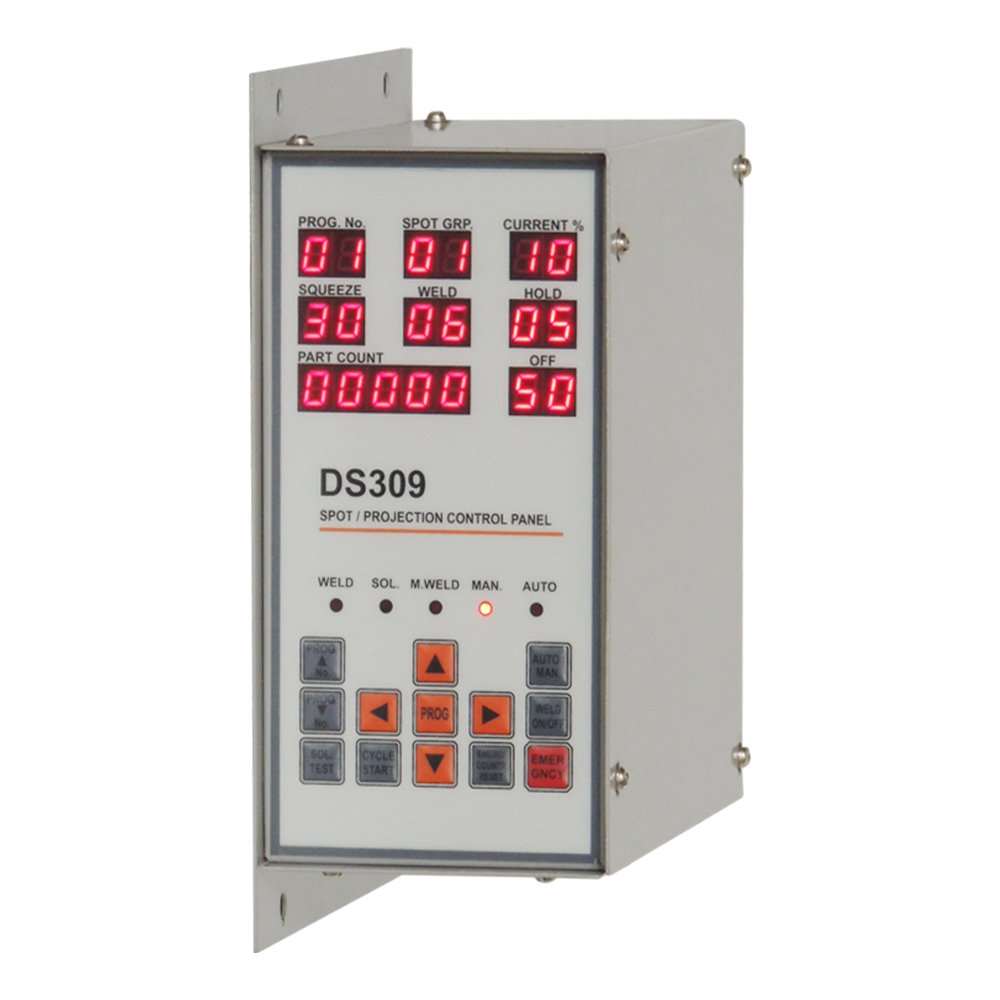
DS310 Resistance Welding Controller
Model:- DS310
DS310 is higher model for general purpose spot and projection welding machines with counter for each program and 10x weld time configurable and thermostat connections for over-temperature safety.
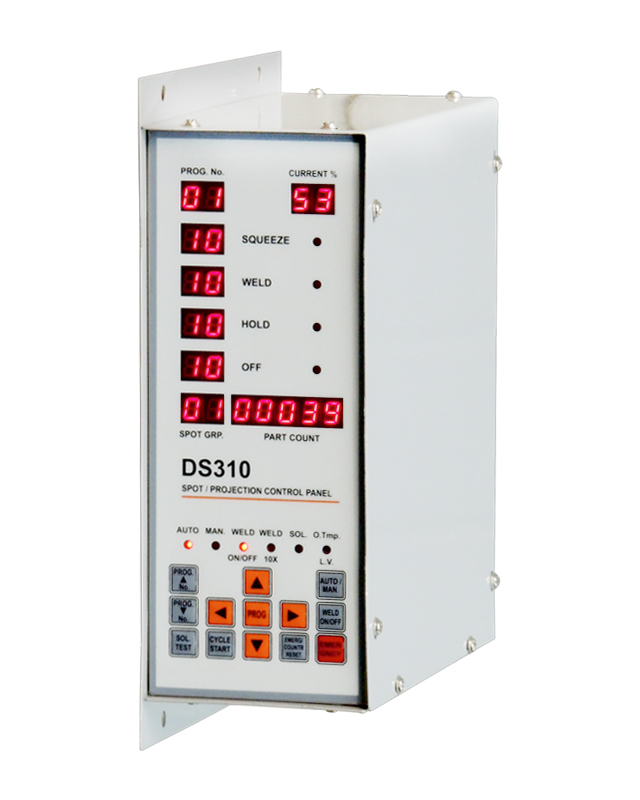
DS311 Resistance Welding Controller
Model:- DS311
DS311 is special purpose model for projection welding machines having double cylinder one for job clamping and other cylinder for welding. Beside of all 310 model features more are double squeeze time, tripple weld and hold timers.
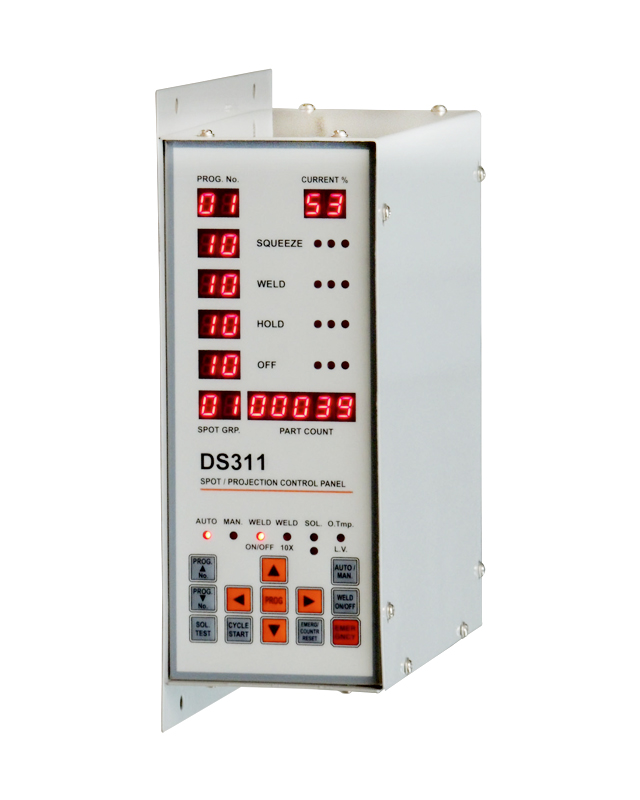
DS312A Double Head Resistance Welding Controller
Model:- DS312A
DS312A panel is made for duel head projection welding machine, that is used to save connected electric supply by placing two operators on a projection welder, when one operator is preparing item to weld the other operator can weld same or other item with different settings. The weld time is configurable to 1x or 10x time and panel has thermostat input to protect machine in case of over-heat due to overload or water failure.
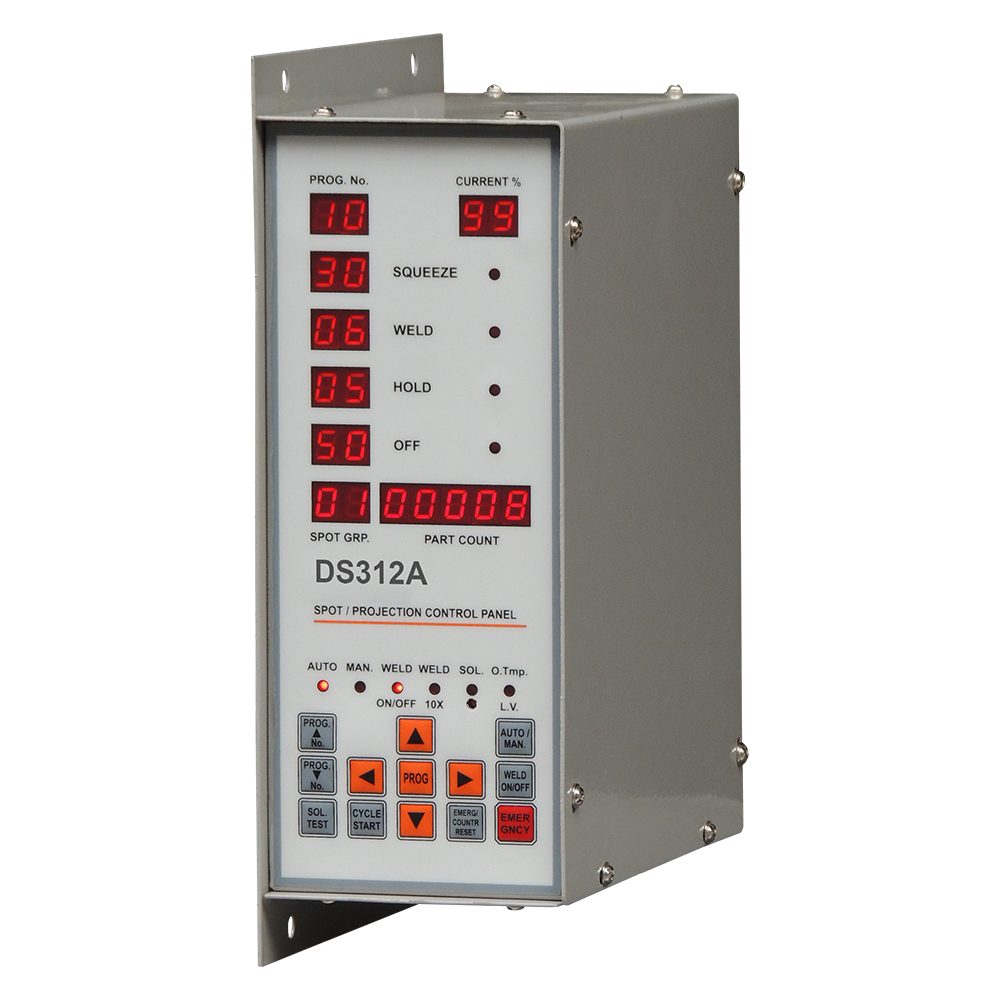
DS3010 Seam Welding Control Panel
Model:- DS3010
DS3010 is digital synchronous control panel for seam welding machines with group setting for multiple welds on a item and counter for each program and 10x weld time configurable and thermostat connections for over-temperature safety.
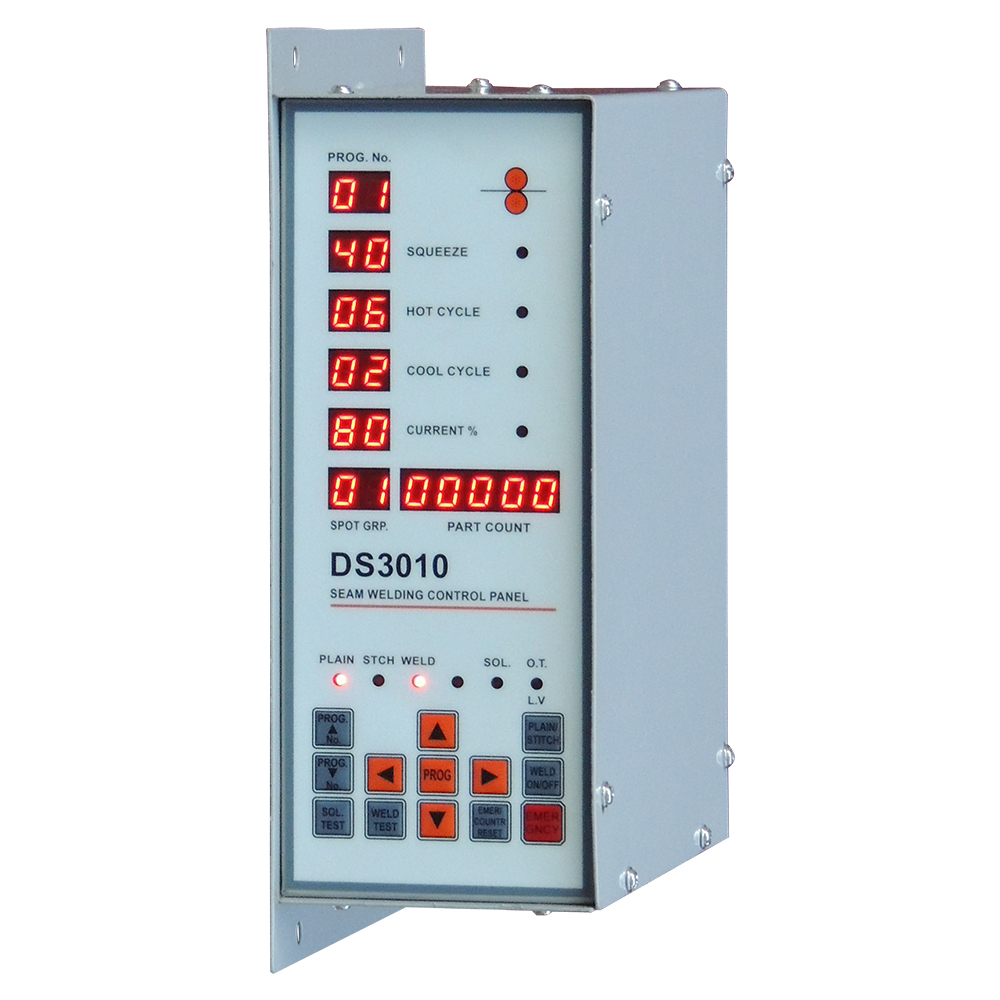
Resistance welding controller applications:
In the realm of manufacturing, where precision and efficiency are paramount, resistance welding has long been a cornerstone technique. From automotive assembly lines to aerospace manufacturing, resistance welding plays a crucial role in joining metal components reliably and efficiently. However, behind the scenes of this seemingly simple process lies a sophisticated technology known as resistance welding controllers, which are instrumental in achieving consistent and high-quality welds.
For fully understand resistance welding controllers, one must
understand Resistance Welding process.
Resistance welding is a process that involves applying pressure and passing electrical current through the interface of two or more metal work-pieces. The resistance to the electric current generates heat, causing localized melting of the metal and ultimately forming a weld. This process is commonly used in various industries due to its speed, reliability, and suitability for automation.
The Role of Resistance Welding Controllers:
At the heart of any resistance welding system lies the controller, which serves as the brain orchestrating the entire welding process. A resistance welding controller is responsible for precisely controlling parameters such as welding current, time, and pressure to ensure consistent weld quality and adherence to specificationsKey Components and Features:
1. Current Control: One of the primary functions of a resistance welding controller is to regulate the welding current. This is crucial for achieving the desired heat input, which in turn determines the quality of the weld. Advanced controllers utilize sophisticated feedback mechanisms to adjust the current in real-time, compensating for variations in material properties and other factors.
2. Time Control: Controlling the duration of the welding cycle is equally important. Too short a duration may result in incomplete welds, while excessive time can lead to overheating and distortion of the work-pieces. Resistance welding controllers enable precise timing of the weld cycle, ensuring optimal heat input and joint formation.
3. Pressure Control: Maintaining consistent pressure during the welding process is essential for achieving strong and uniform welds. Modern controllers are equipped with pressure sensors and actuators that allow for precise control of the welding force. This ensures that the work-pieces are held together securely throughout the welding cycle. If air pressure supplied to machine decreases the machine will alarm & stop functioning to prevent false welds
4. Monitoring and Feedback: To ensure quality control, resistance welding controllers often incorporate monitoring and feedback systems. These systems may include sensors for measuring parameters such as temperature, current, and pressure, providing real-time feedback to the controller. Any deviations from the set parameters can trigger adjustments to maintain weld quality. For current measuring a current transformer, shut or a rogowski sensors is used for measuring electric current.
Benefits of Advanced Resistance Welding Controllers:
1. Improved Weld Quality: By providing precise control over welding parameters, advanced controllers help ensure consistent weld quality, minimizing defects and rework.
2. Increased Productivity: Efficient control of the welding process reduces cycle times and improves overall productivity. This is particularly beneficial in high-volume manufacturing environments.
3. Enhanced Flexibility: Modern resistance welding controllers offer a high degree of flexibility, allowing for easy adjustment of welding parameters to accommodate different materials, thicknesses, and geometries.
4. Energy Efficiency: By optimizing the welding process, advanced controllers help minimize energy consumption, leading to cost savings and reduced environmental impact.
Location: India